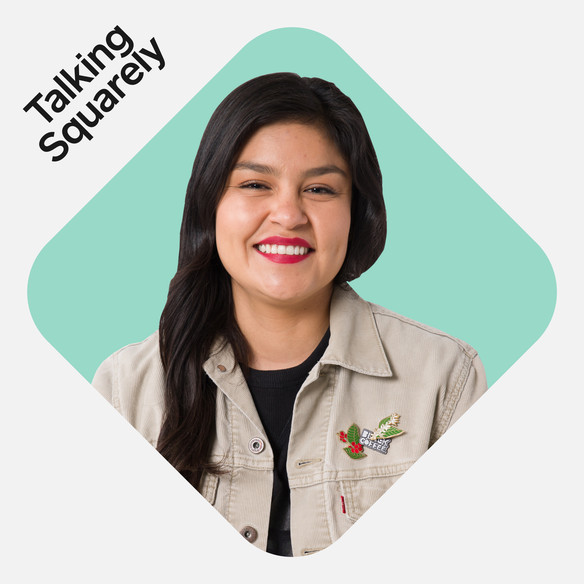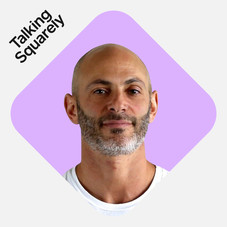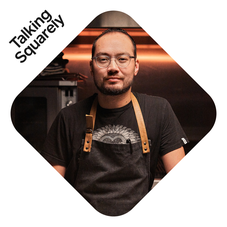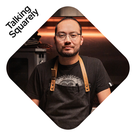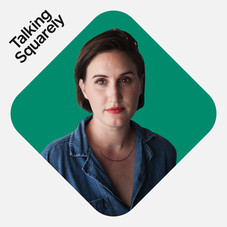Table of contents
A little bit about this episode on managing supply chain disruptions…
COVID-19 has upended global trade. As the global supply chain moved in fits and spurts and infrastructure was rethought to accommodate just-in-time delivery, so too was consumer demand changing as consumers everyday habits dramatically changed. Locally, everything from farms to food processing plants have been affected by shutdowns, impacting how small businesses can restock their shelves. And regulations across the country have changed even what customers expect to see stocked on their shelves. In this episode of Talking Squarely, we speak with two businesses that have seen drastic shifts in their supply and demand.
This episode features Ian VanDam of Civil Alchemy in St. Louis, MO and Karla Mancio, Head Roaster, Red Bay Coffee in Oakland, CA. Want to know a little bit more about our host? Follow Square’s Nelson Murray for more.
At Red Bay Coffee, the business often faces difficult-to-control variables when it comes to their supply chain management. In years before the pandemic, the rain alone could affect regional coffee-growing, and ultimately their business.
“Buying bulk, that’s a big commitment and wanting to make sure that we put our money where our mouth is, and paying almost double for what is considered C price for all of our coffees,” says Red Bay Head Roaster Karla Mancio. The C price is the trading price on coffee set by the Intercontinental Exchange. Mancio says that it was important to honor commitments to their partners such as women’s groups despite the higher price.
When it came to customers, Red Bay started selling wholesale bags, finding a different way to manage their inventory while still operating during the pandemic.
“Specialty coffee price ranges can be from $13 to $20, depending on what you’re getting, so we were offering five pounds of what we called black gold. It was going for $88 and people were like, ‘Well, yeah, I’m spending all my time at home, so I’m going to stock up on coffee and booze, and probably mix them both,’” says Mancio.
At Civil Alchemy, a retailer that sells everything from housewares to specialty foods and beverages, the start of the pandemic meant a drastic drop in sales in almost every category. “Right after this happened, about two weeks in our sales were way down in almost every single category. People weren’t buying apparel, they weren’t buying accessories. All of our fresh flowers had gone bad.”says Civil Alchemy Co-Owner Ian VanDam “Basically, the only thing that was selling for us in our entire store was our wine, beer and spirits.”
VanDam made the decision to leverage the increased demand they had from customers, sitting down with one of his managers and making a plan for a more seamless experience. “What is the minimum amount of money we need to make sales wise to keep ourself in place for the next six months to a year? And, the margin of error was very slim, so when we introduced this, our strategy became, okay, we’re going to basically become a liquor store like right now and our plan for marketing was I was just going to get on Instagram Stories and basically just talk directly to customers,” he says.
Demand planning and inventory forecasting has traditionally been a bit more linear for both small business owners — they know which goods are most purchased by their customers, and make sure they have enough in stock. As the pandemic swept the nation in 2020, consumer behavior changed and with this, so did the way both business owners approached their supply and demand.
Full transcript below:
Ian VanDam:
When we talk about replenishing our stock, what we ran into is that fallout of COVID forced some of our suppliers to close either temporary or permanently. Others were just not interested in working with us or we weren’t interested in working with them. It was this kind of great moment of reflection, where we got to decide and prioritize what was really important to us at that moment.
Nelson Murray (host):
Hi, I’m Nelson Murray, and this is Talking Squarely. In this series, we bring together independent business owners to have frank discussions and share their perspectives on some of the most pressing issues impacting their lives and livelihoods. As a result of COVID-19, many small businesses have had to reevaluate how they manage their inventory due to changing shipment schedules, fluctuating availability, and changing consumer demand.
They’ve had to contend with too much product or even too little, forcing them to get creative in how they run their businesses. Today, we talk with two business owners about how they go about sourcing for their business, the impact COVID-19 has had on their supply chains, and what they’re doing to ride the waves of these changes.
Karla Mancio:
There’s so many aspects of supply chain that affect coffee. Coffee, the product itself is a global thing.
Nelson Murray (host):
That’s Karla Mancio the head roaster at Red Bay Coffee in Oakland, California. Red Bay works with an expansive network of international coffee growers, with an emphasis on sustainability and fair trade. Global events like a pandemic can have a big impact on when she receives new orders.
Karla Mancio:
It’s very expansive, but then, it’s also very local, and very particular, the things that we put our coffee in, and how we put them out. Also, where do they get those from, and what it means when everything stops, and how do we get the things that we need to continue functioning on the big scale, but also, on the very small scale.
Nelson Murray (host):
For Ian VanDam who runs Civil Alchemy in St. Louis, Missouri complexity is also a challenge. His boutique offers a variety of goods from international apparel and home goods to liquor and fresh flowers.
Ian VanDam:
We are not only a retailer, but we’re also a lifestyle brand that services and supplies other retailers and boutiques around the country, so we work with about thirty five suppliers nationwide ranging from Nepal, India, Scotland, Lithuania, Canada, and then, also, domestic suppliers and local suppliers from even here in St. Louis, Missouri. Our supply chain is extremely complicated and really the most simple part is, once it gets here into the store and merchandising it, or connecting it to our retailers. Each country comes with their own set of complexities that changes our strategy for ordering and supply chain, but once they’re here, it’s typically pretty simplified on that level.
Nelson Murray (host):
Well, paint me a picture Ian of what supply chain sort of the flow normally looks like? If I were to actually come to Civil Alchemy and see a mixture of some of the home goods, and perhaps furniture, and other items on your floor, what is the journey that each of those items took to get there in normal times?
Ian VanDam:
So, there are certain products that have launched this year that we’ve been working on for several years to get right. Other things were pretty quick turnarounds, and so, those two things are affected there. For, particularly our products coming from Asia and Europe, those products have lead times that can range anywhere from four weeks to eight months, so we’re really looking to the next two to three years right now, and then, obviously, things like our flowers and our liquor is going through its own distribution channels, so even on the stock that is not a part of our brand, there’s so many different ways that these products are getting into our shop.
Nelson Murray (host):
Karla, knowing that coffee is inherently an international product, at least for us in the United States, can you talk a little bit about what a normal supply chain flow looks like for you at Red Bay Coffee?
Karla Mancio:
On a normal year coffee, we’re kind of on a six months ahead of time because coffee has to get harvested, it then has to get processed, get on a ship, or get from the mill to the ship, from the ship to wherever it’s going, and coffee is a very finicky product in the way that it likes very particular climates, and so, any kind of climate changes definitely affect the timelines. If it starts raining a little too early, then the coffee doesn’t get processed in the way that it typically would, and that might affect quality.
It gets a little nerve wracking, you’re like, “Okay, am I going to get the same coffee that I’m expecting, and that might base a good portion of our product on?” and, finding a way to stay committed to our partners, because their livelihoods depend on this as well, and mitigating those differences of like, okay, if I’m getting a slightly different product, how can I deal with that on this end?
Nelson Murray (host):
Karla, you bring up a good point about seasonality, and the expected unpredictability of your supply chain. I have to imagine that there are sort of normal ebbs and flows to your inventory, and how you can source things from different vendors given where they are in the world.
Ian, can you speak to that a bit?
Ian VanDam:
One of our goals when we really started looking at a product development is that we wanted to create a season-less brand but that still doesn’t take into account the fact that volumes change, regardless of what the product is. One of the things that we ran into pretty much right as March happened is that the assumptions of “there will always be sales and you’ll always be able to move through things” totally was shattered and it really made us go back to the drawing board about what the rest of the year was going to look like, similar to most retailers.
There was kind of a couple of different ways that we were looking at this, and it really did in some ways feel like a gut decision/risk, deciding how much to bring in, because this isn’t really something where numbers, or data, or modeling can help in any way. You don’t account for, what I think we can all consider a disaster, taking into consideration about what sales are going to look like. On our end, we didn’t pull back, but I know a lot of retailers, and a lot of other brands at our size definitely scaled back.
Nelson Murray (host):
Is there an ethical consideration behind this planning? Karla, are there partners that you’ve continued to support despite it being more of an effort to do so?
Karla Mancio:
The reason why we are Red Bay is to improve diversity in specialty coffee and the people that make money in specialty coffee. We aim to work with women’s groups and indigenous groups and all groups of people of the Africa in diaspora and making sure that it’s not just convenient when things are easy, but definitely, supporting each other to get through tough times. Internally, for me are the partnerships that we are getting into are supporting the ideas and ideologies that we come to the table with. We want to see women farmers be more prominent, and usually, in countries that are producing coffee, women’s status is not the liberties that I get to enjoy here in the states.
And so, wanting to work with groups that are wanting to help women become more independent, financially independent through coffee farming, that in general, coffee is a male dominated industry from farming to coffee roasting. The number of coffee roasting women has definitely increased over the last decade, so finding partners that we believe in, that we think that they have a great product, and that we can try to help with importing partners that we have made connections with already, and vouching for them, and saying, “Hey, we believe in this coffee, and we believe what they’re doing, and we want to work with them again.”
Nelson Murray (host):
And, it sounds like that’s primarily done through the vetting and relationship building, but then, of course, the actual where you are spending your money as a brand, and choosing to invest in buying your inventory.
Karla Mancio:
Yes, correct. Buying bulk, that’s a big commitment and wanting to make sure that we put our money where our mouth is, and paying almost double for what is considered C price for all of our coffees.
Nelson Murray (host):
The C price Karla mentions is the trading price on coffee set by the Intercontinental Exchange. All coffee is priced as raw material, regardless of origin or other factors. Although, this price has historically stayed quite low, it can change based on supply and demand.
Ian, do these kinds of questions come up with you and your mind at your business, especially, given the wide variety of products that you’re creating and sourcing from around the world?
Ian VanDam:
One of the things that we’ve really stressed for in adding new products and designing new products is that we’re looking to have a collaborative conversation with our makers and suppliers globally by really working with them to create unique designs that still are inherently genuine to where they’re being made, and honest to where they’re being made. So, when it comes to jewelry, we work with several makers of a multi-generation family jewelers, and Jaipur and Rajasthan, who have specialized in silver jewelry making for many, many years, so working with them, not only to create new products that are unique in the space, but by using and lending their experience in traditional jewelry making as well. And, that seems to be kind of a connecting factor for what we’re doing. We’ve really tried to identify and source our products from family makers and smaller scale suppliers, typically, companies that employ somewhere between ten and fifty employees.
Nelson Murray (host):
And so, it sounds to me like you have found a way to establish lasting and kind of quality relationships with suppliers who meet your quality standards. In other words, you found a way to sort of balance ethical considerations and sourcing things with being able to offer a more unique product with a story behind it. Is that right?
Ian VanDam:
Absolutely, we’re not looking to burn and turn through makers. We’re not looking to play hard ball. I think a lot of the larger retailers kind of have to, to be competitive. We’re looking to create honest business relationships, so that we can both be in a place of trusting each other to grow together.
Nelson Murray (host):
I’d like to now turn to what the first thing was that each of you noticed when the pandemic truly took hold of each of your supply chains.
Ian VanDam:
Well, it was definitely after the shutdown, kind of a funny story. It’s funny now but it wasn’t funny then. About three days after the shutdown happened, we had sent everybody home. I was coming into the office by myself, just trying to pick up the pieces and figure out what we were going to do, I think much like any other business owner. We were definitely nervous and right about then a giant delivery showed up and it was the leather bags that we have been designing and developing for three years. It was a huge investment, both time and money wise, and I guess it couldn’t have come at any worse of a time, because I don’t know if you remember that April 1st is not necessarily when people were investing in leather handbags.
Nelson Murray (host):
Can you talk us through the timeline of when the shutdowns started taking place and what your thoughts were in the aftermath of those changes?
Ian VanDam:
Those two weeks, basically, from March 21st on, our sales plummeted, and when you see that you start really getting concerned about what does the next three months look like? How soon is this going to be over? I think it was a natural intuition to just shut down, hunker down and try to move through what we had for a little bit, and we kind of went into somewhat of a survival mode.
Nelson Murray (host):
And Karla, what about for you at Red Bay Coffee?
Karla Mancio:
I think when big tech started working from home two weeks prior to the shutdown, California state shut down, we started seeing a dip in orders. We supply two coffees, two micro kitchens to quite a few different tech companies in the Bay Area, which is very exciting, but also, very nerve-wracking when a good portion of your sales are being supported by that, and trying to be adaptive, and quick thinking, and light on our toes, and focus on our e-commerce, and making sure that we could sustain the demands of losing one, two…
We went from four retail locations to two retail locations. Some of it was completely shut down for a couple of weeks.
I think our very first shift was definitely the shelter in place, five pound bags. Specialty coffee price ranges can be from $13 to $20, depending on what you’re getting, so we were offering five pounds of what we called black gold. It was going for $88 and people were like, “Well, yeah, I’m spending all my time at home, so I’m going to stock up on coffee and booze, and probably mix them both.” I think that once curbside (pick-up) opened back up, I think people were just wanting to get out, and have some sense of normalcy that they were willing to, we did our best in providing a space in which they felt comfortable coming into.
Nelson Murray (host):
And, people were able to buy those bags online. Did direct to consumer become your focus?
Karla Mancio:
Our eCommerce structure was already there, I think because we were thriving in other aspects that maybe we weren’t paying attention to it as much, and then, we were like, “Yeah, yeah, it’s there. We’re online.” and I think that the need definitely brought it up to our attention that we could streamline it, we could make it more accessible – connecting it to our Instagram so that people can look on their Instagram page and direct link and buy from there.
Making it user friendly and accessible, and optimizing our network to the emails that go out, and I think that there was much more of a focus in making sure that we fulfilled the needs of our grocery markets that we do have as accounts. I mean, that’s where people were being able to get their coffee, and so, making sure that our relationships were strong, and that we met their needs, and that we were flexible, because their demand was different.
Nelson Murray (host):
You touched on this a bit. I’m curious to sort of set this up as a question for both of you. You touched on marketing and how you ended up having to change the way that you communicated to each of your customers about what it was that you had on offer and how those things may have changed as a result of the pandemic.
Can you talk a little bit more about your marketing strategies and perhaps conversations that you had internally about how you were going to adapt to the changes in your ability, for example, to have a physical presence for your customers, but also, the changes due to the difference in types of inventory that you were able to procure.
Ian VanDam:
Right after this happened, about two weeks in our sales were way down in almost every single category. People weren’t buying apparel, they weren’t buying accessories. All of our fresh flowers had gone bad. Basically, the only thing that was selling for us in our entire store was our wine, beer and spirits. Luckily, one of my dearest distributors in town gave me the idea and said, “Why don’t you do a pre-order?” The conversation was, “This is the only thing that’s selling, but i just can’t take the risk. I can’t be wrong to the margin of two, three hundred dollars right now.”
It’s me – I kept one of my managers on, and basically, I sat down and put together a plan, like what is the minimum amount of money we need to make sales wise to keep ourself in place for the next six months to a year? And, the margin of error was very slim, so when we introduced this, our strategy became, okay, we’re going to basically become a liquor store like right now and our plan for marketing was I was just going to get on Instagram Stories and basically just talk directly to customers and say, “Look, it’s me. I’m here at the shop. I’d love to get you whatever you need. I know that you’re looking for wine, beer, and spirits. You may not feel comfortable going to the grocery store right now. I’m a local business, and I can help you. I can get pretty much anything they can. Let me be the person that facilitates that.” And, immediately, we had just an outpouring of support.
I think that second or third week I packed up probably, and we were doing at that point a weekly liquor pre-order. I think we packed up two hundred orders in one day, which was incredible, and the average size of these orders was huge. People were ordering cases of wine at a time, so it was huge, and like I said, we turned into a liquor store, a boutique turned into a liquor store overnight, and that was kind of our strategy for a while, and then, after that was working what really felt good about that, I had my manager that I kept on. She was working from home and was just getting as much as she could on our website, all the stuff that we had kind of said, “Oh, maybe this doesn’t make sense in our website.”
At one point we wanted our website to be mostly our brand, and then, key items that kind of worked well and curated well on our website, but that swiftly went out the door to a, get everything on the website, and then, we’ll just start posting about it, try to pivot to digital right now.
Nelson Murray (host):
So, these were not even exclusively changes in marketing strategies. These were truly pivots in your entire business model and the kinds of products that you chose to prioritize to basically meet consumer need at that time.
Ian VanDam:
Absolutely. The only thing that changed marketing wise is up until the shutdown I really was hands off on a lot of our marketing. We had a person that was a marketing specialist who had worked with us, and had since gone on to start her own business, and she was helping us on the side, and at that point I said, “You know what? I think I need to handle this. It’s just me here right now. Let me see what we can do.” And, I just got on every single day and just tried to keep it positive, just try to show people what I was doing at the shop that day.
Nelson Murray (host):
To an extent you’ve answered this next question, but I’m curious if the pandemic has really changed the way that each of you think about sourcing, and if not sourcing so much, how you present your products to your customers.
Karla, you can start there if you’d like.
Karla Mancio:
Sourcing, I think it just reinforced the idea of community. Even though our partners in different countries are far away, that doesn’t mean that they aren’t a part of our community, and being supportive, and making sure that we communicate that, again, through hard times, we’re in this together, and we will find a way. I think that the other issues that we encountered regarding supply chains are bags for coffee, also, put it in our mind that we need to be ready to source from other places, and have a list of people and companies that have the same values, and repurposable products, and recyclable products, and the carbon footprint, so that when things like this do happen, we have other partnerships that we can definitely support.
It was very interesting, because I felt like I was a new driver, so everything came to a halt, and everything was like all breaks, and then, the Black Lives Matter protests happened and we popped up on every support black owned company list that was available for coffee, and so, we saw a huge, huge influx of traffic in the summer and I had kind of steadied myself, and I was like, okay, let’s continue to move through some of this products, as I start talking to partners. I’ll really reevaluate, and forecast for things that as they are right now, and what is the most truthful, honest commitment that I can make to them?
Nelson Murray (host):
Well, Ian, for you, it sounds like Civil Alchemy has pivoted entirely to being a liquor/flower shop. Is that the future of your offering, or do you feel like you will revert back to offering other home goods and furniture like you used to?
Ian VanDam:
We opened back up to limited audience probably starting in early July and when that happened, obviously, certain categories started to open up again for our sales. The other thing that happened right about then, and even really a month before that was our wholesale all of a sudden turn back on, because literally, I know certain states, obviously, we all know this, but different states, different regions, different markets were kind of opening up, and there was a very diverse array of public perception on when it was okay to open, so even though we were in stay at home orders here in St. Louis county, we had stores that were either doing well online or had opened back up to limited audience, and other parts of the country that were still ordering. And, that was huge for the summer, especially, because people were selling and not reordering all of the second quarter, so when third quarter hit, all of a sudden that turned back on and we had to start scrambling to either expedite our orders or add orders, so that we didn’t run out of product.
At the same time, we’re starting to hear about all these businesses in our own local economy are starting to close, and that was heartbreaking, obviously. I think there was this moment where we realized, wait, there are things that we can do locally and domestically. There are extremely talented people who are hungry to work with us right now. We don’t need to cancel this product. We can find somebody, and I guess it’s still outsourcing, but in my mind, it’s insourcing. We were looking locally, we were looking within, because in a lot of ways we saw the supplier dynamic of working with local makers to be a little bit more stable, because we took out one key element of the equation, which is moving the product from its production stage into our show, so that definitely was our biggest pivot, was starting to look inward again about further balancing out our ratio of makers, both internationally, nationally, and locally.
Nelson Murray (host):
Karla, what about you? How are you thinking about your relationships with your partners?
Karla Mancio:
Sales to us is, keeps us moving. Our product is a live product, it has a shelf life. The longer that it sits, the more expensive that it becomes and quality starts to decline, because it’s a live product, so knowing that sales were not anywhere near the goals that we needed to meet to be moving the inventory that we had committed this year, and finding a way to still try to move product so that when we have to start conversations with our partners for next year, that we can take maybe not the same amount that we took this year, but close to it, and making sure that, again, renewing our commitments to them, that even through hard times that together, we can get through this.
Nelson Murray (host):
Rather than cut their inventory, or end relationships with key partners, both Ian and Karla leaned into what makes their businesses unique. They continue to support the networks of independent makers, and fair trade suppliers, and have found creative ways to sell their products or pivot to new categories entirely. While global supply chains remain unpredictable, their quick thinking has helped them find stability, and a renewed sense of purpose.
A special thanks to Ian and Karla for their perspectives on managing supply chains and seller relationships. Civil Alchemy is located in St. Louis, Missouri. You can find them online at civilalchemy.com. Red Bay Coffee is headquartered in Oakland, California. Check them out online at redbaycoffee.com and you can find their mobile coffee truck @RBC_coffee_van on Instagram.
You’ve been listening to Talking Squarely, a Square production. This episode was produced by Mallory Russell, Cindy Lewis, Alise Bailey, Evan Groll, Travis Gonzalez and Camille Kail. Our music was composed by Jordain Wallace with sound recording by Sorrentino Media and Jamie Cohen. I’m Nelson Murray. Thanks for listening.
The views and opinions expressed in Talking Squarely are those of our guests, and do not reflect the official policy or position of Square.
![]()

